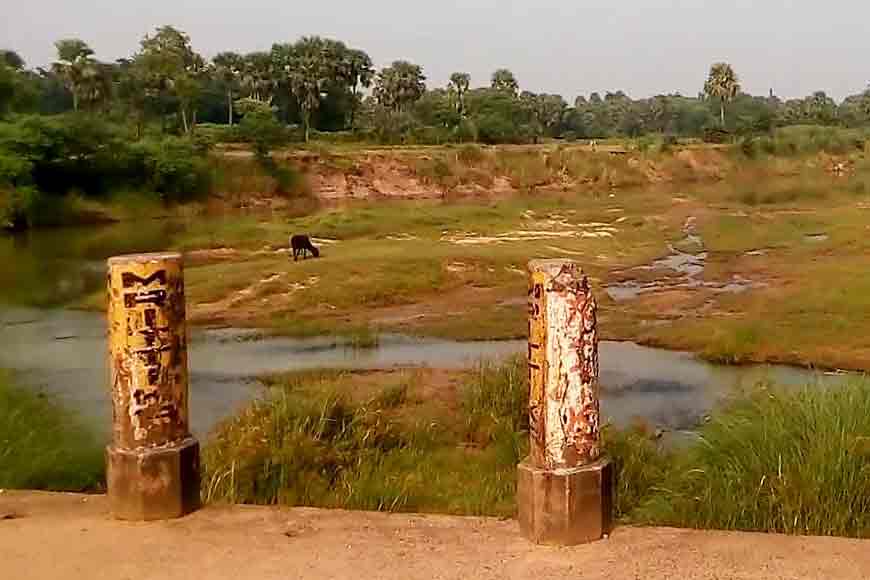Is Tagore’s Kopai a dying river?

Kopai River (also called Sal River) is synonymous with Rabindranath Tagore and Santiniketan. A tributary of river Mayurakshi, it flows past Santiniketan, Bolpur, Kankalitala, Kirnahar and Labhpur in Birbhum district. It is a small river in the dry season but overflows its banks during monsoon. Rabindranath was not only fond of the small fast-moving stream (he had christened the river Kopai) but was fascinated by the harmonious co-existence of nature and human beings along its banks.

The river exists in many of Tagore’s creations as a living entity and he has dedicated many of his poems to this gurgling, lively river. However, the future of the river is now at stake and if the warning signals are ignored, the day is not far when Kopai will cease to exist. At least, that is the result of observation and detailed study of the river basin undertaken by a team of experts who recently carried out a survey of the river.
The findings came to light following a survey conducted by the Geography department of Visva Bharati University after a gap of 25 years. The first study was done in 1991 by a team of 15 teachers who ventured till the source of the river, studying the local landscape, basin area of Kopai, land use of the surrounding area, gully erosion created by the river, the impact of the river on the people who lived on the river-belt, their socio-economic conditions etc. This time a 50-member team walked the entire 110-km stretch from the source of Kopai river in Khajuri village in Jamtara district of Jharkhand to its mouth at Hansuli Bank in Labhpur where the river joins Bakreshwar River.

Both surveys were conducted under the leadership of Moloy Mukherjee, a river expert and senior professor at Visva Bharati University. This time, students and a number of ex-bureaucrats also joined the team. Their aim was to look for solutions to save the river, sensitize locals to the alarming situation and provide realistic suggestions for ecological restoration of the river and its surrounding areas.

According to experts, the close bond between the settlers inhabiting the banks of Kopai has lessened. They are no longer totally dependent on the river for their livelihood. Negligence and a general apathy towards the river is a direct outcome of this diversification of occupation. A large number of brick-making kiln unit shave come up on the banks of the river, contaminating the environment of the vicinity. Right from the source of the river at Khajuri to Lokpur, Binuniya and even at Hansuli Bank, illegal brick-making kiln units have mushroomed. The impact of unauthorised sand mining, which is simply put, theft on environment and ecology, cannot even be calculated. Moreover, unplanned construction of dams on the river has further restricted the natural movement of Kopai. The team has found the situation to be very critical and unanimously agrees that disaster cannot be averted in the long run if immediate steps are not taken to revert the situation. However, not all is lost yet, and the field study group was optimistic to discover local people who were keen to join hands and work together to restore the lost glory of Tagore’s Kopai. Mukherjee and his team plan to organize various ways to educate and sensitize the locals on how to restore the river’s condition.









